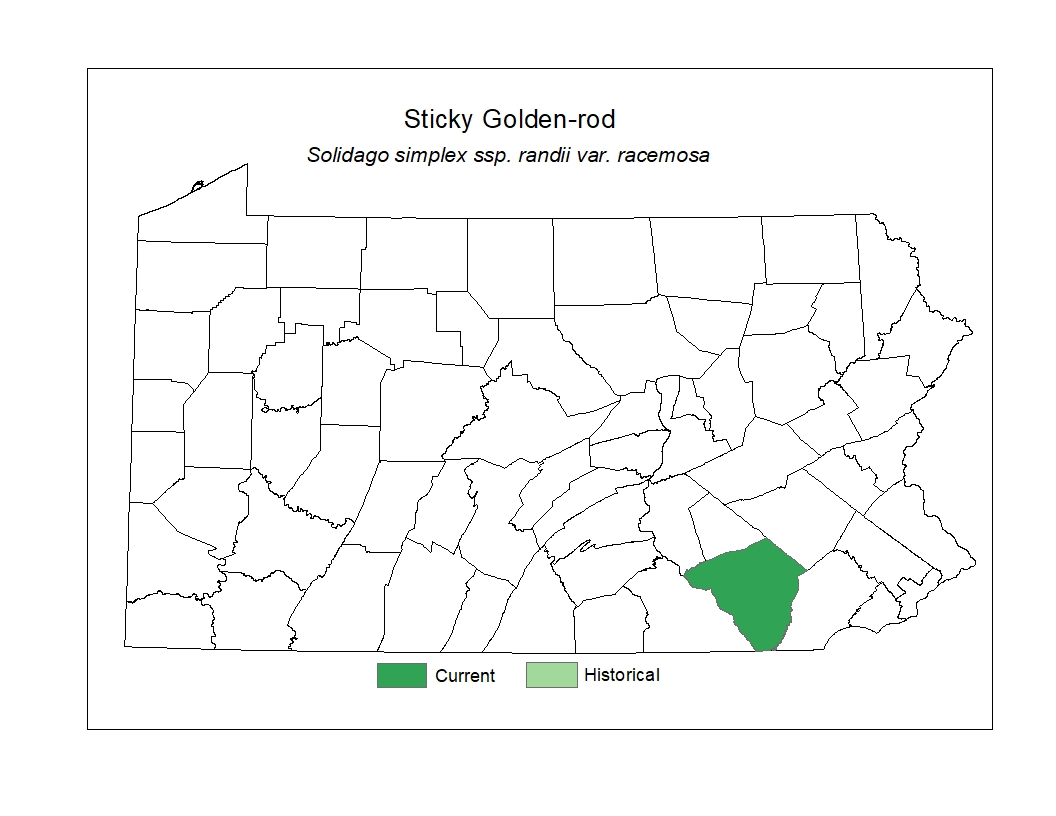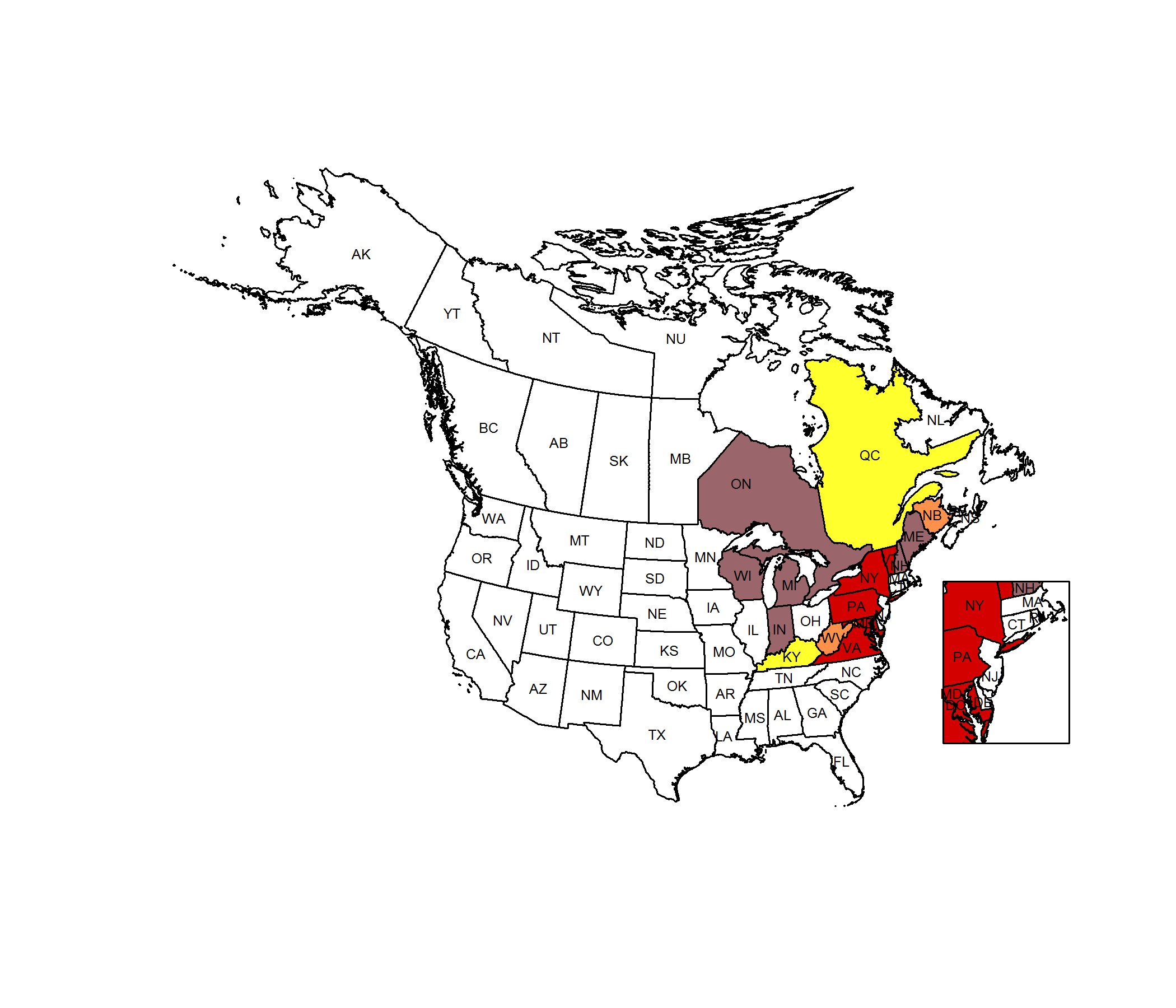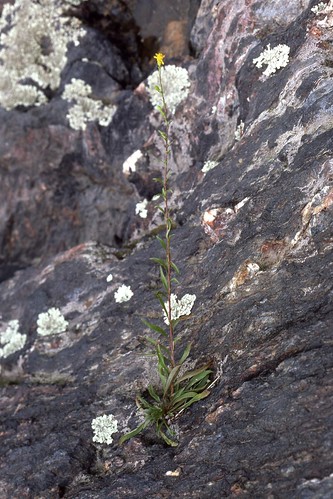 Species Factsheets
Species Factsheets
Solidago simplex ssp. randii var. racemosa
Sticky Goldenrod
State Status: Pennsylvania Endangered (PE)
PBS Status: Pennsylvania Endangered (PE)
Federal Status:
Global Rank: G5T3?
![]() rank interpretation
rank interpretation
State Rank: S1
Did You Know?
Many species feed on goldenrods such as aphids, leafhoppers, stink bugs, birds, deer and rabbits and more.
Description
Sticky goldenrod (Solidago simplex ssp. randii var. racemosa) is a perennial herb that reaches up to 90cm in height. Its upright stems are mostly smooth but become hairy near the top. The leaves are oblong to egg-shaped, widest above the middle, and taper toward the base. Most leaves are basal and the leaves that do grow on the stem are progressively reduced as they ascend the stem. The flowers are displayed from August to September in cylindrical clusters of many small flower heads. The flower clusters vary in form. They may be dense and wand-shaped or have an open, branched appearance. Each small flower head has a yellow central disk surrounded by seven to ten yellow rays.
Rank Justification
Critically imperiled in the nation or state because of extreme rarity (often 5 or fewer occurrences) or because of some factor(s) such as very steep declines making it especially vulnerable to extirpation from the state.
Habitat
Occurs in river scours, rock crevices or shores
Survey Dates
Flowers August - September
Distribution
In Pennsylvania this species occurs in river scours, rock crevices or shores along the Lower Susquehanna River.

Threats
Throughout the range of this species, habitat loss, land conversion for development and displacement by invasive species have all played a part in its decline. Sticky goldenrod grows along riverbanks where it is susceptible to increased erosion caused by excess run-off, removal of riparian forests, and ATV use.
Management
Protection of sticky goldenrod will require maintenance of known populations and preservation of the riverside communities that support the species. This may include sustaining appropriate hydrology, removal of invasive plants, and establishment of buffers that can moderate the effects of scouring events and run-off. Management of the known sites requires long term monitoring of populations.
Conservation Status Map


NatureServe. 2017. NatureServe Explorer: An online encyclopedia of life [web application]. Version 7.1. NatureServe, Arlington, Virginia. Available https://explorer.natureserve.org.
https://www.illinoiswildflowers.info/prairie/plantx/dune_goldrod.html
- NatureServe. 2018. NatureServe Explorer: An online encyclopedia of life [web application]. Version 7.1. NatureServe, Arlington, Virginia. Available at https://www.natureserve.org/explorer
- Pennsylvania Natural Heritage Program. 2018.
- Rhoads, A.F. and W.M. Klein, Jr. 1993. The Vascular Flora of Pennsylvania. American Philosophical Society, Philadelphia, Pennsylvania. Rhoads, A.F. and T.A. Block.
- 2007. The Plants of Pennsylvania: An Illustrated Manual. 2nd edition. University of Pennsylvania Press, Philadelphia, Pennsylvania.







